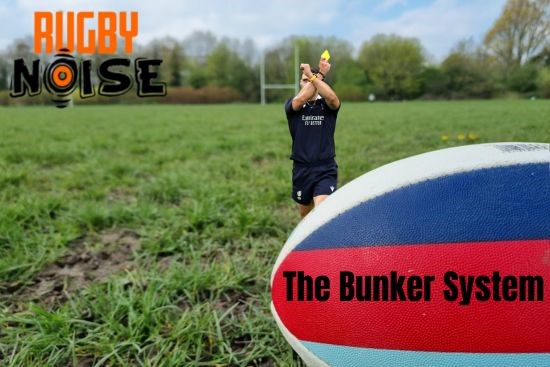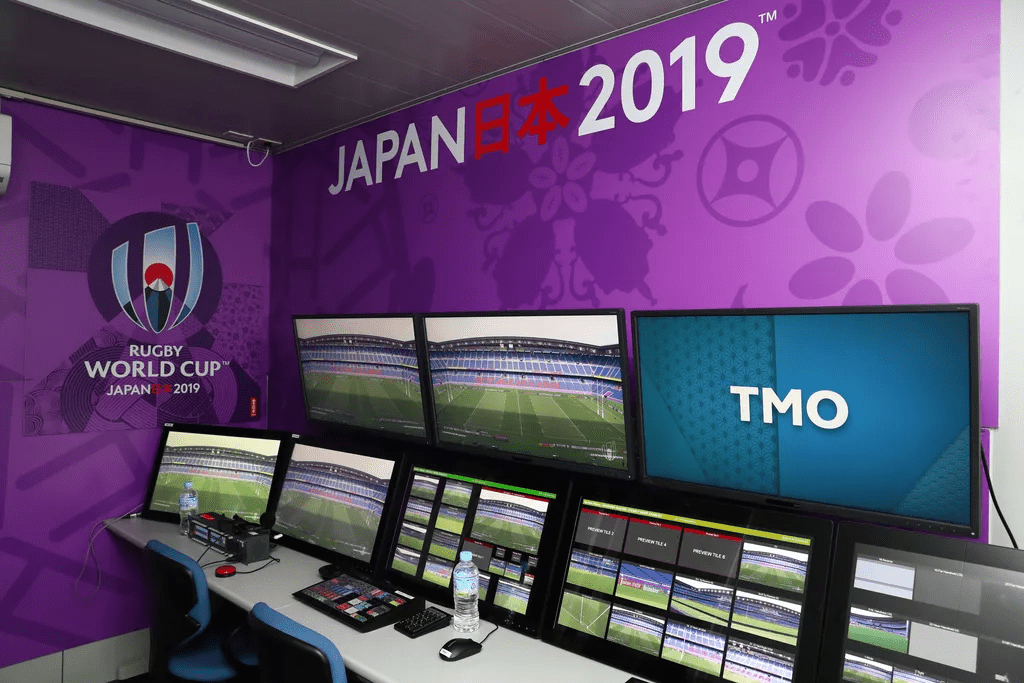There are a lot of new innovations being brought into the game of rugby over the last few years. One of the new terms is the bunker system, yet quite a few fans are not sure what the bunker system is in rugby.
What is the bunker system in rugby? The bunker system is used in Rugby when a dangerous play happens, the bunker will review the incident off the pitch to find out whether the yellow card needs to be upgraded to a red card. This is sometimes known as an orange card. The bunker is staffed by qualified rugby officials and furnished with state of the art video replay equipment. This is where TMO decisions are made from.

The bunker system might sound extremely complicated, but it really is not. When a player commits some sort of foul play that is seen as dangerous, the referee has to assess whether it meets the yellow card threshold, instead of trying to assess what colour card is needed.
Now, the referee just has to assess whether the incident meets the yellow card threshold. If it does, then the bunker system has eight minutes to decide whether the yellow card needs to be upgraded to a red card. If it does, then the bunker will inform the referee that the yellow card needs to be upgraded to a red.
If the yellow card does not need to be upgraded to a red card, then the bunker will also inform the referee of this and the player will return to the pitch after the ten minutes has elapsed on their yellow card.
The bunker system is quite new to rugby and at the time of writing, is only used in international rugby. The idea behind the system is that it takes some of the pressure of making the tough decisions off the referee, as well as helping to speed the game up.
The system was brought in for the 2023 Rugby World Cup, with World Rugby wanting to ensure that the tournament is as exciting of a spectacle as possible. We are yet to see whether this sort of system will be implemented in other competitions, but It has been quite a successful system so far.

The bunker system has also often been called the orange card system. That is because when the referee gives a yellow card that could be upgraded to a red, it is seen as an orange card. The bunker is the officials who will watch the replays of the incident which caused the card and assess whether the yellow should be upgraded to a red.
Why is there a bunker system in rugby?
One of the new rules that has been brought into international rugby over the last few years is the bunker system. While it seems slightly complicated and possibly unnecessary, there is some good reasoning behind the system.
The bunker system was brought into rugby to help speed the game up, help the officials make faster decisions and take some of the pressure off of the on-field referee. These are the main reasons for the bunker system being introduced to the game.
When World Rugby announced that they were introducing the bunker system, the main reason for the system was to help speed the game up in international rugby. By having reviews for red cards happening off the pitch, the game can continue while the checks are taking place.
All the referee has to do is decide whether an offence is worthy of a yellow card, which is faster than deciding whether something is a red card or a yellow card. The review system has eight minutes to decide whether something is a red card or a yellow and there is no pressure on the decision to be made quickly.
As there is not the same pressure on the officials to make the decision quickly, the decisions made by the bunker system will be more accurate than those made by the referee on the pitch. Hopefully fewer mistakes will be made by the officiating team as they have eight minutes to make the decision on the card.
Is the bunker system going to be at the Rugby World Cup?
The bunker system is one of the newest innovations in world rugby, so the system will be used at the Rugby World Cup.
The bunker system is going to be used at the 2023 Rugby World Cup. World Rugby have stated that the system will be used in all of the games in the tournament. This is to help speed the games up a little bit and make it more exciting for fans.
World Rugby did not want a huge amount of time being taken up by reviews for head contact or foul play. So by implementing the bunker system, the reviews can take place off the pitch and therefore the game can continue without a stoppage being needed.
Can you get 2 yellow cards in rugby?
There are some similarities between the card system in rugby and football. Despite that, not everyone knows whether you can get two yellow cards in rugby.
Two yellow cards in rugby lead to a red card. Just like in football, you cannot get two yellow cards in rugby without also receiving a red card. This is the same as in football, with the only major difference between the two being that when you get a yellow card in rugby, you are sent to the sin bin for ten minutes.
Getting a second yellow card does not mean that the player has to spend another ten minutes in the sin bin, instead they cannot play any further part in the game at all.
How long do you stay in the sin bin in rugby?
The sin bin is a unique concept in rugby, so not a lot of people know how long the rugby players have to stay in the sin bin.
Rugby players have to stay in the sin bin for ten minutes when they are given a yellow card. Unlike in football, a yellow card in rugby means the player has to sit in the sin bin for ten minutes.
Any player who gets two yellow cards does not go to the sin bin again, they must make their way down the tunnel and are not allowed to play any further part in the game.
